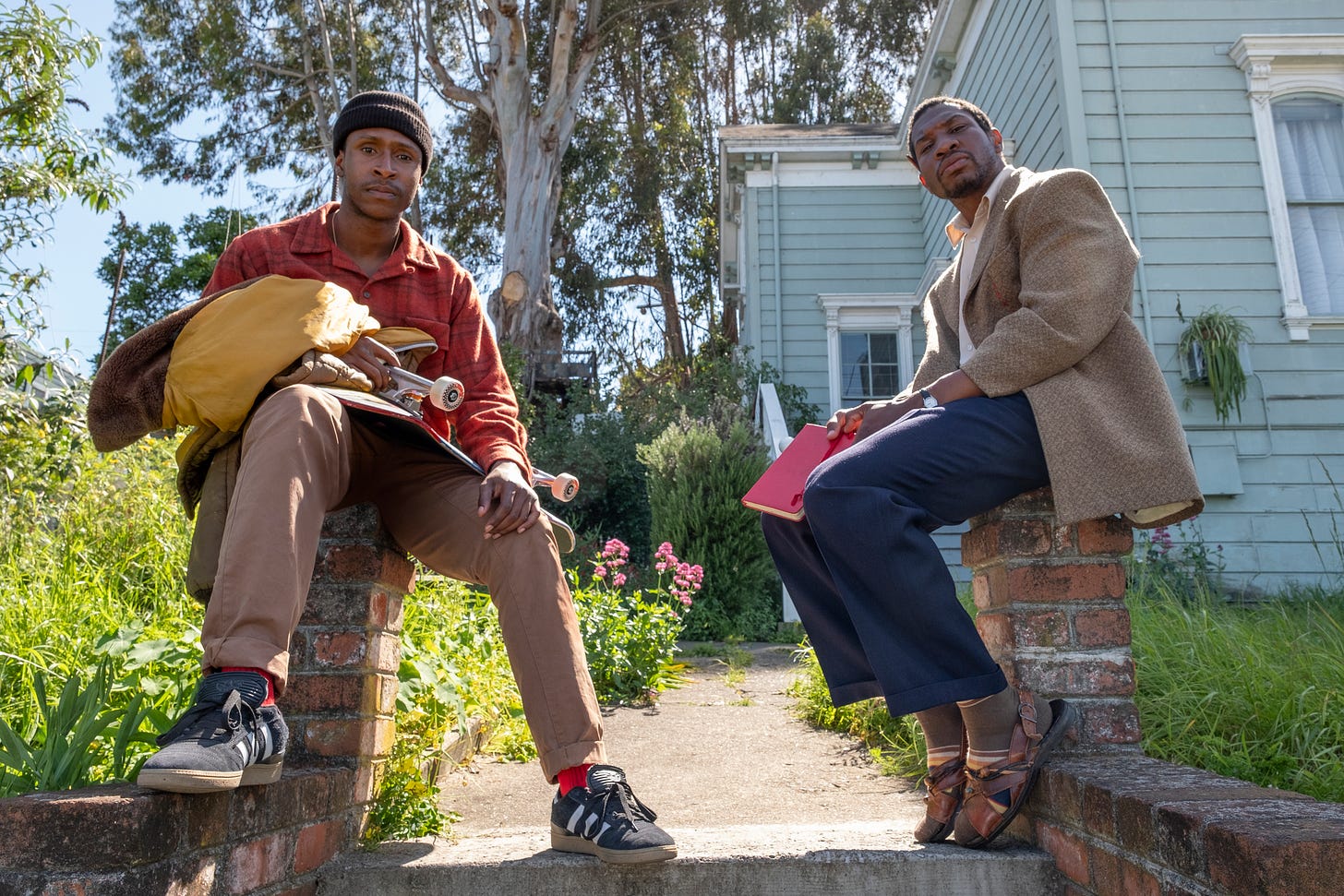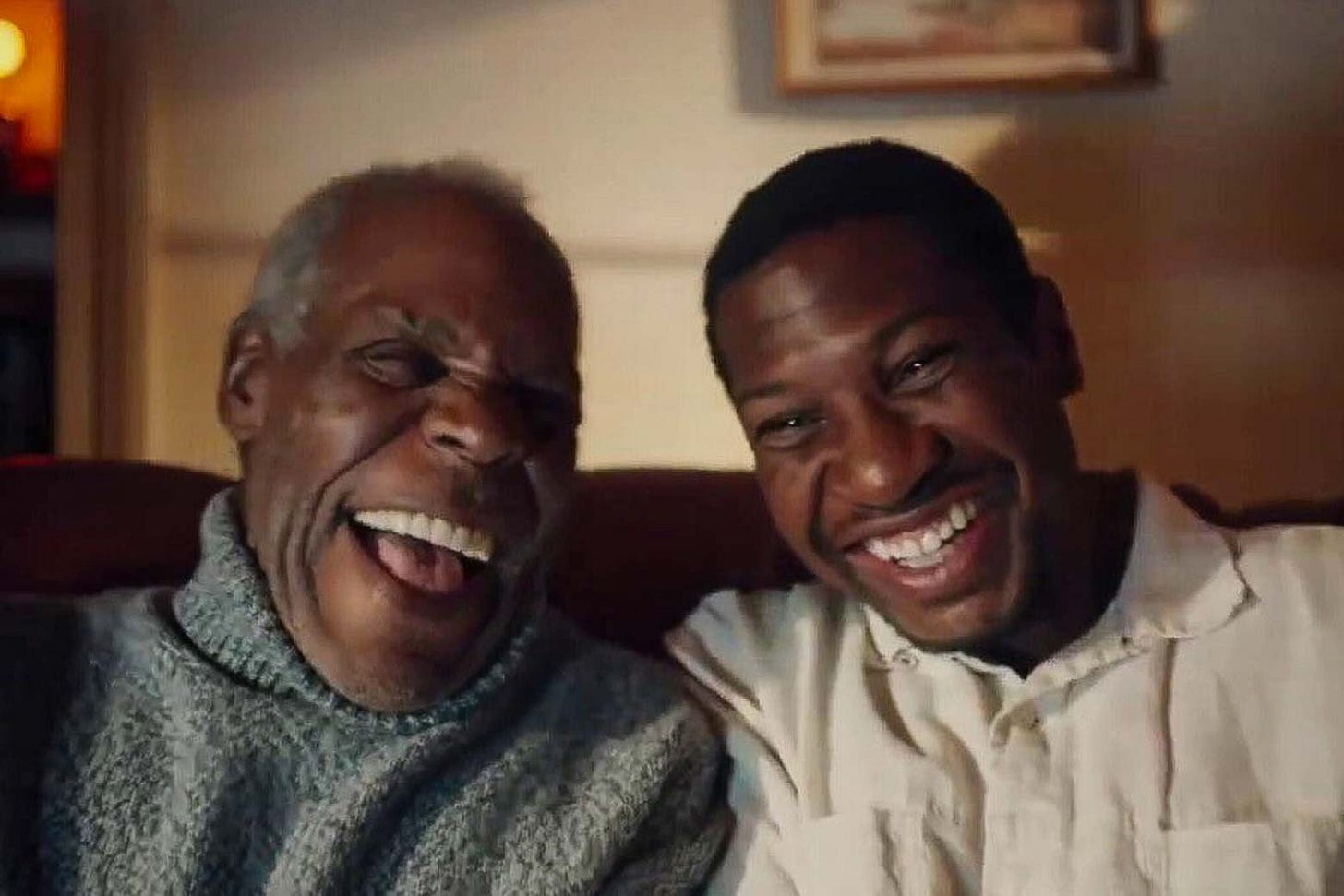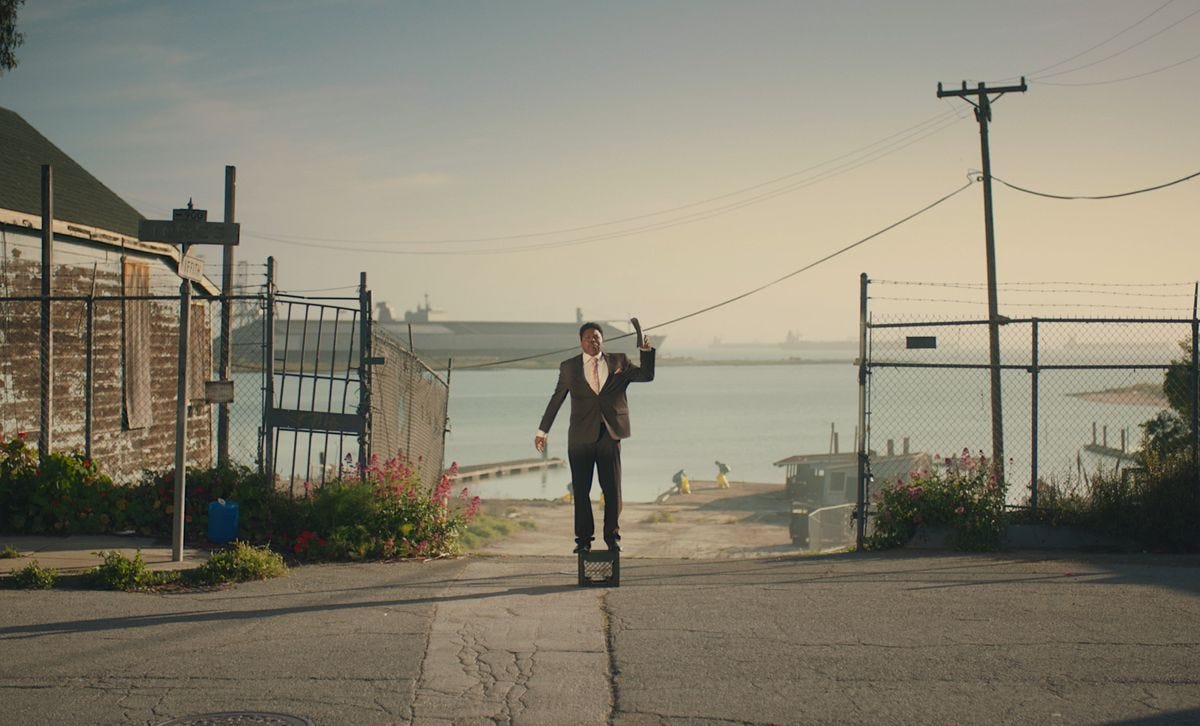I’ve traveled a solid amount around the country, but somehow I’ve never been on the west coast. California has always held a romantic allure, I would love to visit sometime. San Francisco has always glowed onscreen, and it certainly shimmers in the complex “The Last Black Man In San Francisco”, a dreamlike fable about two friends who struggle to engage with the past of their hometown.
Jimmie (Jimmie Fails) and Mont (Jonathan Majors) are two contemporary artists who, on a whim, visit a house overlooking the ocean that Jimmy claims once belonged to his grandfather. They visit the home a few times, dreaming about what could have been and what once was, until one day, fortune smiles upon them. The family inhabiting the place are preparing to move, and now Jimmie thinks he might reclaim what is his. A real estate agent (Finn Wittrock) gives him conflicted advice – Jimmie won’t be able to purchase the home, but the home will likely remain empty for a good long while. That’s enough for Jimmie to call the place his own, and he and Mont move out of the home of Mont’s grandfather (Danny Glover) and into their squatter’s palace.
Jimmie’s decision, which Mont mostly follows like a good friend would, is based on his lack of roots and identity. Supposedly, Jimmie the actor is playing himself and this is largely based on a true story. There’s considerable conflict about what the identity of a young Black man is meant to be in America, particularly in an increasingly-gentrified San Francisco. There’s a sense of authenticity to the idea that this home that Jimmie has commandeered might be steeped in his own blood. In a rapidly changing city, Jimmie wishes to belong.
Mont humors him, though he is fairly skeptical about these family ties. Fails is moving in his role, though this is an early showcase for Majors’ dynamism. I followed Majors’ ascent while I was down, which took him from indie movies to, perhaps inevitably, a major franchise role at Marvel. Like a lot of interesting young actors, Majors’ appeal seems to be that he’s never easy in his own skin. Clearly, he was trying to bust racial and social stereotypes early in his career, indulging in the persona of the Hypermasculine Black Man while also revealing himself as something of a theater kid, providing the grounding for his role in this film.
I knew there was something a bit complicated about this quest of Majors’ when I started reading interviews with him. In one, when he was discussing his arrival into the MCU world, he spoke of how, back in his neighborhood, people were expected to “show your paperwork”, a common prison expression. Which of course made me roll my eyes – you’re playing Kang The Conqueror, fella. He’s from the 31st century and he has blue skin, chill out. His later performance in “Creed III” as an ex-con showed me that he had some experience with people who had done time – his squirrely discomfort in that movie was entirely accurate to the feeling of existing in the outside world after so long being imprisoned. It’s unfortunate he made some unwise choices, earning a criminal conviction, and has even gone on record continuing to shirk responsibility for his actions. It’s almost as if this criminal justice stuff doesn’t even work!
Majors is but one of several interesting performances in this film, however. In addition to Fails, Glover brings a characteristic warmth to his role as a sweet curmudgeon, and the excellent Rob Morgan is a third act highlight. As Jimmie’s sister, Tichina Arnold reveals a subtle depth, and there are even appearances from Mike Epps and, very briefly, Jello Biafra of all people. The movie has a powerful sense of time and place, capturing a uniquely American portrait of this lovely city and the contradictions therein. But, should you so prefer, this movie is also something of a stealth “Ghost World” sequel. So, hey, it’s not just an affecting movie, it’s also IP.
Jimmie’s hazy recollection of his family and legacy brings to mind how visits from loved ones were often the only awareness I had of time passing. Some would visit for the first time in months, and for you, it was yesterday that they were here, it’s been only days or even hours. But suddenly, that loved one has gray hair, or they’re now walking gingerly. Maybe they’ve brought a child. Suddenly, they’re happier than they once were. And you have to realize it’s been a year, maybe more. A lot has changed while you’re frozen in place.
This resource was lost to many of us during the pandemic, as facilities were shut down and no visits were allowed. From 2020-2022, despite a few brief, failed trial runs, there were no visits allowed. Unfortunately, but expectedly, some prisons have been slow to adjust to the end. The pandemic meant less officers were needed on staff, and at the close of the pandemic, those staffs were not expanded thusly. Many institutions, it seems, comfortably pocketed the funds that came from limiting inmate moves and minimizing staff. Again, this is an example of a business making a business decision, one that harms hundreds of families. The article linked above is a reminder that prison remains, more than anything else, a numbers game, a game played with the lives of many who don’t deserve that treatment.








Every time I go to comment on one of your posts, I get hung up on whether to comment on the sublime (the featured movie) or the ridiculous (the state of incarceration in our country).
On the movie: I saw this when it first came out, but still remember it fondly. And, as I remember, it is also an example of a movie scored exceedingly well.
On the ridiculous: If the BBB continues to passage, there may be too many prisoners and too few visitors to go around for the amount of visiting hours to matter. I wish I were being flippant, but $170 billion will round up and detain a lot of "undesirables". As you have pointed out, once the cells are built, they will be filled.
Also, let's call them what they are: concentration camps.